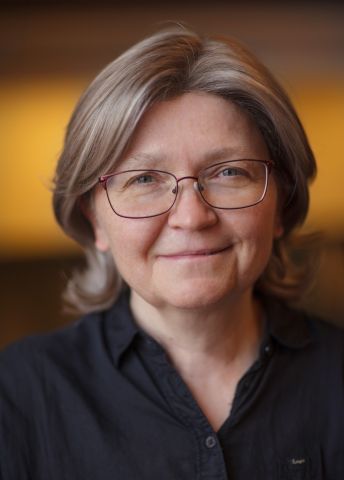
Susanne Höfner
Professor of Theoretical Astrophysics
Wallenberg Scholar
Institution:
Uppsala University
Research field:
Stellar winds and cosmic dust


Wallenberg Scholar
Institution:
Uppsala University
Research field:
Stellar winds and cosmic dust
The origin of elements in stars is a central theme for many researchers, not least in astrophysics. The cosmic dust created is involved in processes that ultimately lead to the creation of life. The fact is that virtually all atoms in our world and in our bodies are the result of nuclear processes in stars.
“But we still know little about how the newly created elements spread across the universe,” says Höfner, who is professor of theoretical astrophysics at Uppsala University.
“A common explanation given is that they are the result of supernova explosions, but that is not the whole story,” she points out.
As a Wallenberg Scholar, she intends to unravel these questions and seek new knowledge.
Her research became unexpectedly topical in early 2020 due to an unforeseen cosmic phenomenon. For some weeks Betelgeuse – a red supergiant – dimmed drastically, a change that could be seen with the naked eye.
“I went out one evening and looked up at the night sky and saw something strange,” recalls Höfner.
Observations using various instruments showed that Betelgeuse had expelled a massive cloud of gas that obscured part of its hot radiant surface. Despite intensive studies, we still do not have any fundamental physical models that can fully explain the phenomenon.
The Betelgeuse event exemplifies how direct observations can give impetus to research.
“Suddenly it was no longer just a theoretical question. Now we could really see that something had happened, and we want to find out why,” Höfner says.
To solve these mysteries Höfner intends to develop new and realistic models of the atmospheres and winds of cool giant stars and supergiants. Her goal is to explore the processes that contribute to dust formation and wind acceleration.
“We want to understand how our own sun and similar stars end up as white dwarfs, in contrast to massive stars, which end in a supernova explosion.”
Höfner will be combining advanced three-dimensional computer simulations with high-resolution observations in the hope of devising models that can be compared in detail with actual data.
“It’s not about getting quick results; we need to build models based on fundamental physics.”
The exciting thing about our research is that it contributes to our fundamental picture of the origins of life.
One challenge is the enormous computational capacity required to simulate complex processes of this kind. A single simulation requires the use of supercomputers for several months. Limitations in computer capacity oblige the research team to make careful choices about the processes to be included.
One major advantage is that the researchers of today have access to images of stars at resolutions that were previously impossible, using instruments such as the Very Large Telescope (VLT) and ALMA (Atacama Large Millimeter/submillimeter Array) in Chile.
“Nowadays we can actually see the surface or surroundings of stars, and we can obtain clear images of what we are modeling. All this makes the research really exciting,” Höfner enthuses.
The images show that the atmospheres and winds from red giants and supergiants have complex dynamic structures at different scales, with clouds of gas and dust. Numerous physical and chemical processes continually take place.
Observations show how stellar winds carry off material from the surface layer of stars – the stellar atmosphere – throughout most of a star’s lifetime.
A star’s loss of mass accelerates dramatically as it approaches the end of its life, evolving into a cool giant or supergiant. In this phase the wind is probably driven by radiation pressure on small solid particles known as dust grains, formed in the outer regions of the stellar atmosphere.
“One of my dreams is to understand this stellar mass loss and arrive at a robust physical description, since this process is linked to so many other questions, such as stellar evolution and the origins of elements,” Höfner explains.
Even as a child Höfner was fascinated by space. She grew up in Austria in the nineteen sixties and seventies – the era of the space race between superpowers and the first moon landing.
“As a child I did in fact think of becoming an astronaut, and I was fascinated by the sky at night.”
But it was when she realized that physics could be applied to stars that her interest really gained momentum. Having studied physics and astronomy at university, she went on to complete a PhD, before finally ending up in Sweden.
As a Wallenberg Scholar, she now has the time and resources to delve deeper into some of the most fundamental questions in astrophysics.
“It’s a great advantage to receive a grant of this kind. It gives me freedom and the opportunity to work in a calm environment. Research of this kind takes time and requires a great deal of reflection.”
Text Nils Johan Tjärnlund
Translation Maxwell Arding
Photo Magnus Bergström